The Early Schools of Indian Buddhism Series
Buddhist schools in the 5th Century A.D. according to the Chinese pilgrim Fa-hsien
Part 10
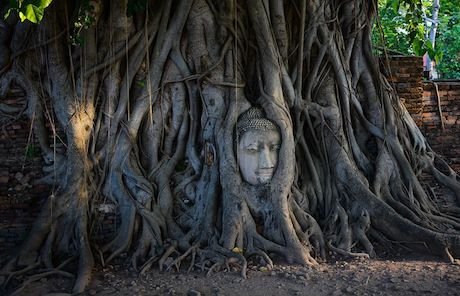
Section 1 — Mahasamghika Origins — An alternative thesis
In his 1974 article ‘A Review of Scholarship on the Buddhist Councils,’ Charles S. Prebish challenged the commonly established thesis, that the first schism in the Buddhist Sangha occurred during the Second Buddhist Council. This established thesis was based on the fact that the Mahasamghika Vinaya account only has rules against one of the ten points of controversy discussed, concluding that the Mahasamghika were silent, and therefore lax, on the other nine rules that other schools condemned. When verifying the Mahasamghika Vinaya, Prebish found all ten rules in the Mahasamghika Vinaya, which puts the established thesis into question from the beginning. The above can be summarized in three conclusions about the Mahasamghika and the account of the Second Buddhist Council:
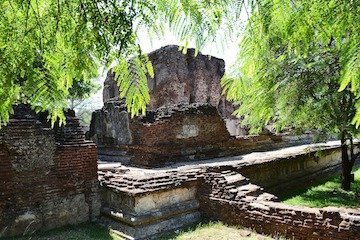
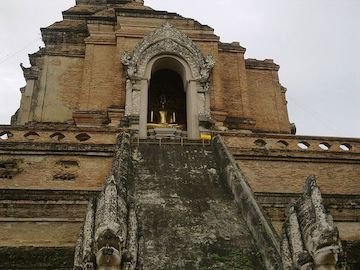
Prebish’s thesis puts the blame of the schism on the Sthaviravada, and not the Mahasamghika:
Section 2 — The Travels of Fa-Hsien and its Importance to Indian History
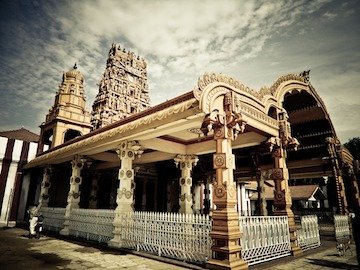
Fa-Hsien was a Chinese Buddhist monk, who traveled from China to Swat valley, Gandhara, Northern India, Eastern India, Ceylon, the Indonesian island of Java, and finally back to Eastern China by sea. He lived between 317 and 419 A.D. He made his journey to India in search of complete original texts of the Vinaya Pitaka (Books of the Discipline), which include the Buddhist rules of conduct for monks and nuns. He did so, as he was disappointed in the deplorable and imperfect state of the collection of texts of the Books of the Discipline that was available to him in his monastery. Fa-hsien was his clerical name, meaning ‘Illustrious master of the Law.’ His travel account has survived as the text entitled ‘Record of Buddhistic Kingdoms,’ and includes valuable historical information about the state of Buddhism as religion and culture in the regions that he visited.
Section 3 — The Buddhist Schools mentioned in Fa-Hsien’s text
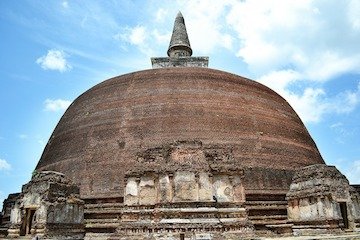
For most of the monasteries that Fa-Hsien visits, he does not mention in particular to which particular school it belongs too. In most instances, he mentions Hinayana, or Mahayana, or that both Hinayana and Mahayana were practiced as such in a particular area. For example, in chapter 27, a Mahayana monastery exists right next to a Hinayana monastery, and together they account for 600 to 700 monks:
“By the side of the shrine of Asoka, there has been made a Mahayana monastery, very grand and beautiful; there is also a Hinayana one; the two together containing six hundred or seven hundred monks. The rules of demeanor and the scholastic arrangements in them are worthy of observation.”
The Sanskrit term for the monastery that is used in the text is Sangharama, meaning ‘gardens of the assembly,’ initially referring only to the surrounding park, but later on meaning the entire premises. In the Swat valley, 500 Hinayana monks are mentioned, but no particular school is given. When visiting Gandhara, Fa-Hsien mentions the monks were mostly Hinayana. In the Punjab area, 3000 monks are mentioned who are students of both Mahayana and Hinayana. In Mathura, he observes that various offerings are made to different objects of veneration, i.e., the nuns make offerings to Ananda (because he asked the Buddha to allow females to join the Sangha), Mahayana followers present offerings to the Prajna-paramita (the perfections of wisdom), and to Bodhisattva Manjusri.
An interesting reference to Devadatta is made in chapter 20 of the text: “There are also groups of the followers of Devadatta still existing. They regularly make offerings to the three previous Buddhas, but not to Sakyamuni Buddha.” Devadatta was Ananda’s brother, who tried to take the life of the Buddha Sakyamuni. Which particular school these followers might adhere to is not given in the text.
In chapter 25 a reference is made to the ten ‘wrong’ disciplinary rules of the Vatsiputriya, who were monks from Vaisali, and the fact that a shrine had been erected to commemorate the Second Council’s proceedings:
“There is a shrine commemorating the following occurrence:— A hundred years after the pari-nirvana of the Buddha, some monks from Vaisali went wrong in the matter of the ten disciplinary rules and appealed for their justification to what they said were the words of Buddha. Hereupon the Arhats and monks observant of the rules, about 700 monks, examined afresh and collated the collection of the Books of the Discipline (Vinaya Pitaka). Subsequently, men built at this place the shrine (in question), which is still existing.”
Chapter 28 references Dharmagupta, and this might be a reference to the leader of the Dharmaguptika school, which had 2000 followers a the Abhayagiri-vihara monastery in Ceylon.
Chapter 36 references the Mahasamghika school by name, while residing in Patna, Fa-Hsien finds what he is looking for and makes a copy the Mahasamghika Vinaya text:
“From Varanasi (the travelers) went back east to Pataliputra. Fa-Hsien’s original objective had been to search for copies of the Vinaya texts. In the various kingdoms of North India, however, he had found one master orally transmitting the rules to another, but he could not find any written copies. He had therefore traveled far and come to Central India. Here, in the Mahayana monastery, he found a copy of the Vinaya, containing the Mahasamghika rules,—those which were observed in the first Great Council, while Buddha was still in the world. The original copy was handed down in the Jetavana Vihara. As to the other eighteen schools, each one has the views and decisions of its masters.”
At the same location, Fa-Hsien also found the Sarvastivada Vinaya text, as well other texts, including the Mahasamghika Abhidharma Pitaka. As a result of this treasure trove of texts, Fa-Hsien stayed here for three years, learning Sanskrit books and the Sanskrit language, and transcribing and translating the Vinaya rules.
Chapter 40 references the Mahisasaka school by name while residing in Ceylon, Fa-Hsien finds the Vinaya of this school, as well as four Agamas collections:
“In addition to his acquisitions in Patna, Fa-Hsien succeeded in getting a copy of the Vinaya Pitaka of the Mahisasaka school; the Dirgha-Agama and Samyukti-agama (sutra collections); and also the Samyukta-Sanchaya Pitaka (a sort of ‘miscellaneous collection’ fourth Pitaka)”
Section 4 — The Buddhist Schools mentioned in the Samuel Beal translation notes
Although only four of the eighteen schools are mentioned in the travel records of Fa-Hsien, the other schools are referred to by the translator of the text:
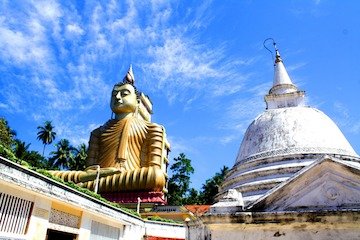
The Vaibashikas. The first of these schools, which represents the primitive Buddhist church, is divided into eighteen sects, included under four principal classes with their sub-divisions.
Group 2 — The followers of Kasyapa, who was a Brahman. These repeated the Pratimoksha in the Prakrit language and were known as Mahasamgikas. They were subdivided into five minor schools:
Group 3 — The followers of Upali who was a Sudra. They repeated the Pratimoksha in the Paisatyeka dialect, and were generally known as Sammitiyas, i.e., the honorable sect; they were subdivided into three classes:
Group 4 — The followers of Katyayana, a Sudra, and were commonly known as the Maha-Sthaviras; they were subdivided into three classes:
These three classes represent the traditions of the three monasteries: Maha Vihara, Jeta Vihara (in Kosala), and the Abhayagiri Vihara in Ceylon.
Group 5 — The great school of the Sautrantikas consists of those who follow the teaching of the Sutras (in distinction from the teaching of the Vibhasa). They are divided into two sects:
In the next article, the Buddhist schools in the 7th Century A.D. according to the Chinese pilgrim Yuan-Chuang will be discussed.

- Introduction to the history of Buddhist Councils and Schools-Part 1
- The Buddhist Councils — Who, when, where, and why?Part 2
- The Buddhist Councils — Who, when, where, and why?Part 3
- The History Of ‘Northern Buddhists’ of Sarvastivada - Part 4
- The History Of ‘Northern Buddhists’ of Sarvastivada - Part 5
- Buddhist schools at the time of the First ‘Maha-Kasyapa’ Council at Rajagaha. - Part 6
- Buddhist schools at the time of the First ‘Maha-Kasyapa’ Council at Rajagaha. - Part 7
- Buddhist schools at the time of the Third ‘Moggaliputta Tissa’ ‘Asoka’ Council - Part 8
- Buddhist schools in the 5th Century A.D. according to the Chinese pilgrim Fa-hsien - Part 9
- The Ten Stages of the Mahayana Bodhisattva Path-The Two Preliminary Stages-Part 1
- The Ten Stages of the Mahayana Bodhisattva Path-The Two Preliminary Stages-Part 2
- The Ten Stages of the Mahayana Bodhisattva Path-The Two Preliminary Stages-Part 3
- The Ten Stages of the Mahayana Bodhisattva Path-The Two Preliminary Stages-Part 4
- The Ten Stages of the Mahayana Bodhisattva Path-The Two Preliminary Stages-Part 5
- The Ten Stages of the Mahayana Bodhisattva Path-The Two Preliminary Stages-Part 6
- The Ten Stages of the Mahayana Bodhisattva Path-The Two Preliminary Stages-Part 7
- The Ten Stages of the Mahayana Bodhisattva Path-The Two Preliminary Stages-Part 8
- The Ten Stages of the Mahayana Bodhisattva Path-The Two Preliminary Stages-Part 9
- The Ten Stages of the Mahayana Bodhisattva Path-The Two Preliminary Stages-Part 10
- The Ten Stages of the Mahayana Bodhisattva Path-The Two Preliminary Stages-Part 11
- The Deathless In Buddhism
- The "Timeless" Teaching-Being Beyond Temporality
- The Nine Successive Cessations In buddhist Meditations - Part 1
- The Nine Successive Cessations In buddhist Meditations - Part 2
- The Nine Successive Cessations In buddhist Meditations - Part 3
- The Twelve Links Of Dependent Origination
- THINGS to DEVELOP and THINGS to AVOID
- The First Noble Truth
- The Second Noble Truth
- The Third Noble Truth
- The Fourth Noble Truth
- 10 Fold Path Series
- EATING MEAT — WHY THE BUDDHA WAS NOT A VEGETARIAN
I will flag comment spam at 1% strength. If you keep on spamming my post, I will flag you at 100%. I don't care if you have limited English abilities, write a couple of sentences about this article, no copy-paste, please. I will flag: one sentence comments, links to your blog and begging for up-votes and follows. Also, I will flag comments that have nothing to do with my blog's article. I will also check your comment section to see if you have been comment spamming on other blogs.
It's been sometime that I dropped by your blog and it looks like I have a missed a couple of posts in between. Sorry about that.
Reading this particular post, I felt that I need to go back to the previous couple of posts and read them first. Usually, I pick up stuff pretty quickly but in this one I had to repeat a few parts to get them through to my mind. Probably shoudn't have missed the last couple of posts. I'll go back to them once I read this again. Although the this tenth part was fairly independent but having read all the previous ones would have helped.
I remember something really interesting about the word Sangharama. I am from India and have studied Sanskrit in school for 4 years. I remember the school textbook (or maybe another book that I saw at the same time) depicting this picture of Gautama siting under a tree with his disciples. This picture was used to depict the word sangharama. I think it left a weird impression on my mind that the base of the tree where Buddha sat and the surrounding monks together were called sangharama. I am not sure, it was all at least fifteen years ago and I have forgotten a lot.
Still its really interesting to me to know that a picture and a word that I never use would stick to me for so long :-)
Our article "Buddhist schools at the time of the Fourth ‘Vasumitra’ ‘Kanishka’ Council at Jalandhar," was my favorite. We found an old story about how a nation was conquered by corrupting their youth and I realized while editing the story we found that humanity hasn't changed much regarding greed and will to power for thousands of years. The only difference I see between ancient cultures and our current global culture is technology. Humans haven't evolved along with their machines. Sangharama can mean many things depending on context. I don't know sanskirt as well as I know Pali, I studied Pali to help me understand my meditation and sutta teachings. Sangharma can mean temple, monastery, garden, tree grove for monastic communities, a class of devas and a Bodhisattva from East Asia, a famous warrior who died in battle and became a wandering ghost. Long story you can find here ==> https://kagyuoffice.org/karmapa-revives-the-tsurphu-protector-practice-of-sangharama/
Hey @reddust, sorry for the late reply. I had the link you gave me open in my browser for the last two days but almost forgot to read it. It is quite good actually, although a little abstract to me (mention of spiritual experiences and such) but I think I got the gist of it. Neverthelss I was only focusing on the references to Sangharma. Where it is mentioned in the context of Guan gong, was pretty interesting to read.
Even as I read the article, my easily swayed attention was still focused on what you said in the reply:
This is so true that it is a bit unnerving to analyze deeply. For all our sophistication and claims of Frontal cortex ruling our actions, the human kind is still slave to its deeper and reptilian part of the brain. Particularly when push comes to shove.
The Mahima movement claims to have been founded by the
Buddha himself, though at first confined to a select group of
hearers. The consensus of the evidence, however, is that it originated
in South India in the 1st century A.D. There are references1
in the Mahiiyiina siitras themselves to their being known in the
South after the pan'ninMina, after which they will spread to the East2
and then the North. Several of the leading teachers of the new
doctrines were born in South India, studied there and afterwards
went to the North to teach: one of the earliest, if he was a
Mahapist, being Nagquna. Other major siitras are circumstantially
connected with the South, for example the detailed itinerary
there of the Ganqhyiiha and location of the bodhisattua Maitreya
there, whilst the LankEvatEra is connected with Ceylon (both these
sii~rar are later and show a new phase of Mahayana which we shall
discuss in the next chapter, but they show that the South was then
vigorously creative in producing Mahiiyiina sutras, which may well
have been a continuation of earlier creativity
I cannot understand your text @jcobs
I am amazed by the level of complexity shown by the different schools of Buddhism. In addition, the number of schools is by itself staggering. We tend to think of people of thousands of years ago as simple people, living for survival, without the complexities of our "modern lifestyle". The interest in philosophy in those days seems to be even greater than what it is now.
@marcusantoniu26, the more I study history the more I see humans have struggled for a long time with power. That's why I think the lessons we learn from old stories and ancient religions are just as important as they were for people in the past. We may have advanced in science and technology but we haven't changed our behaviors that much.
I'm so glad to be back to see you my friend ..
I do not understand the divisions in Buddhism.
in Islam there is also a lot of flow of trust, the split reaches 73 groups, due to this split a lot of spilled blood, this is one dark side of history isllam after the death of Prophet Muhammad.
the peak of the split is the onset of siffin war, war jamal, history has recorded all these splits,
@steemitnatural, from what I've seen researching and reading about religions all over the world and philosophical groups disagreements over philosophical and personal views is common. I think it's natural however it is sad when people try and force their particular view on others. There is the dark side of any group of humans, institution, corporation, or organization. I missed you, and I will be back on Steemit full-time next month.
we are very glad to hear you will be active again, hopefully I also have finished planting the whole garden with papaya, so we can both meet every day
a very complicated split I understand my friend ,,
in tasauf there is also a story of the division of understanding between the understanding of wahdatul wujud and wahdatus syuhud, this split to cause to the victims of the soul, where a follower wahdatul wajud namely Mansur al Hallaj punished beheaded by the ruler at that time,
hope you are always healthy @reddust, I always miss you
@steemitcountry, there has been violence between different schools of Buddhism and also rulers, mostly from the Brahman caste. I've read stories of one Brahman King sought vengeance on Buddhist monasteries because the Brahmins lost power and wealth when Buddhism became the favored religion of rulers. He destroyed monasteries in his kingdom and killed many monks. The Brahman leaders could no longer make money from sacrificing animals to the Gods and lost influence with the elites. Eventually, Buddhism died out in India because the monasteries lost touch with the everyday people who supported their needs, they no longer taught how to overcome suffering and avoided ordinary people for purity's sake, plus competing religions including Islam became popular.
I was raised as a Theravada Buddhist and this post was fairly accurate, however, the definition of a Bodhisattva isn't totally accurate according to the india tradition. A Bodhisattva is the term used to describe a being who will become a Buddha in a following life, more specifically it is used to describe Siddhartha Gautama (the Buddha) in his previous lives. Also, it is true that an Arhat (Arahanth) is a being that attains nirvana (enlightenment and ends their cycle of suffering and rebirth upon their death) and a Buddha is an Arhat/Arahanth, because they also end their cycle as well upon death. The difference is that the Buddha teaches and helps others to get on the path to Nirvana. Basically the definition you used for a Bodhisattva is the definition we use for a Buddha and a Bodhisattva is this person in his previous live.
The Bodhisattva (Sanskrit), Bodhisatta (Pali) is on the Bhumi path to becoming a Buddha, depending on the Bodhisattva's path becoming a Buddha takes many, many lifetimes. The Bodhisattva path in Mahayana main text is the Prajnaparamita, which is my favorite sutra! I wrote the ten Bhumis and attainments of the Mahayana Bodhisattva linked at the bottom of this article @shihabiee. My first Buddhist teacher is a Monk from Korea and I took the Bodhisattva vow after six months of study. Sunim could read and write in Pali and Sanskrit. I was taught from the Pali Cannon before I began reading the Prajnaparamita. Sunim said I was suited for Vipassana meditation not Zen meditation the school he was from. That's how I met my first meditation teacher SN Goenka who taught laypeople. He was from Burma and has passed away a few years ago. I was able to meet him and serve at a ten-day retreat back in the late 1990s. Over the years I have done many vipassana retreats with assistant teachers. I started studying Dzogchen with Vajrayana teachers back in 2003 and have learned the Tibetan system a little bit. The teachings from Tibet are vast, I picked Dzogchen and Chod as my main areas of study.
In india Buddhism "bodhisathwa" is a person who develop some skills (like generosity ) necessary to be a Buddha. It's a difficult practice that most people easily would give up. If someone wants to end the Samsaric journey (going life after life which has no end otherwise) they can still do it without becoming a Buddha. Anyone can attain The Nirvana or the enlightenment by following the way found by the Buddha. They are called an "Arahanth".
I agree @moniristi, if one follows the teaching of Buddha they can break the chain of rebirths and find peace in this lifetime. But breaking one's conditioned reaction is very difficult, I've been practicing since 1993 and have let go of many conditioned reactions but they were easy to see like a bad temper, panic attacks, and night terrors. I left them behind at a ten-day vipassana retreat, but my conditioning has become subtle and sneaky now that the obvious reactions have been removed.
At this time in my practice, I can't imagine what it would be like to become an Arahant, Bodhisattva, or Buddha.
Respected Dalai Lama ji says from time to time that "India is the Guru of Tibet, So Much was brought to Tibet, including religion, it's traditions, language, culture, medicine and health-care. All these and so much more were brought to Tibet through the Kindness of Indian teachers. India is the land of Aryans or Arya Bhumi, anything comes from India is very sacred very respectful for us. Eastern-Asian Buddism and Indian Hinduism are very closely related also Traditional Indian Physiology is much advance. So,therefore I describe, or When I meet an Indian, I always say, Your are traditionally our Guru, We are Chela (disciples), You Indian Our Guru. Then also I mention that we Tibetan's are not only Indian Guru's Chela, but also quit reliable chela, That means in Guru's own land of Dharma, lots of ups and downs, during this period, We your chela through centuries, we kept your knowledge intact, so we are quit a reliable chela (disciples), So our relationship (Indian & Tibet) is something very unique Guru & Chela."
I have studied with Rinpoches @hafez, the last ten years my practice has been primarily Dzogchen and Chod. I have met many Tibetan teachers and Monks, mostly Nyingma and Karma Kagyu. One of my favorite teachers I took my Medicine Buddha empowerment from Venerable Khenpo Sonam Rinpoche, a very kind but strict Monk from the Dokham Riwoche Monastery located in the village of Kyil Risib Ybrong. Khenpo now runs a monastery in Canada. I have studied with several other teachers and learned how setup teachings for visiting teachers. I love Tibetan art and their ancient medical system. One of my favorite Buddhist philosophers and teachers is Nagarjuna, I've read a lot of his teachings, I especially like his work with Dependent Origination and his arguments refuting other religious schools.. Everyone I meet is my teacher <3
http://www.riwoche.com/SonamRinpoche.html
Very thorough article and lovely photos. You know you should do a table top book on the Buddhist temples and architecture as it is so remarkably beautiful. Thanks for sharing @reddust.
I would like to visit the temple complexes and take the pictures for my table-top book @enjoywithtrey. Visiting ancient Buddhist sites around the world is on my bucket list!
buddhism is one of the best religion for peace......i have learn many things from you,........you are doing a great job,,,,,,,, you must be rewarded for this job...... love to stay with you
As this series shows us even accomplished Buddhist still struggled with disagreements. However, the Buddha's teachings still have the power to heal a modern troubled heart/mind as they did in the past. Thank you for stopping by my blog @steemibu351